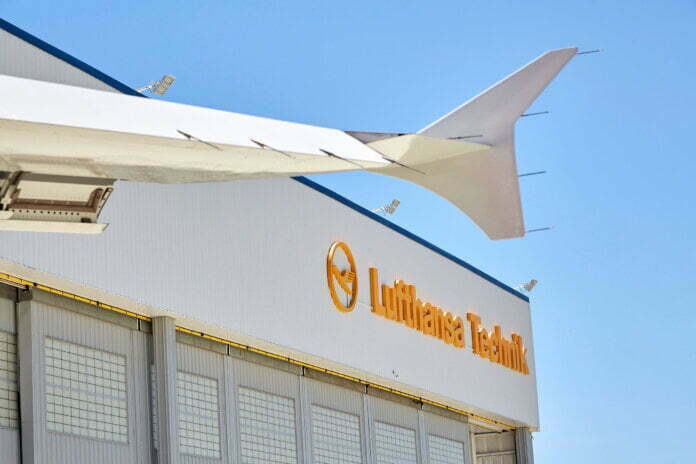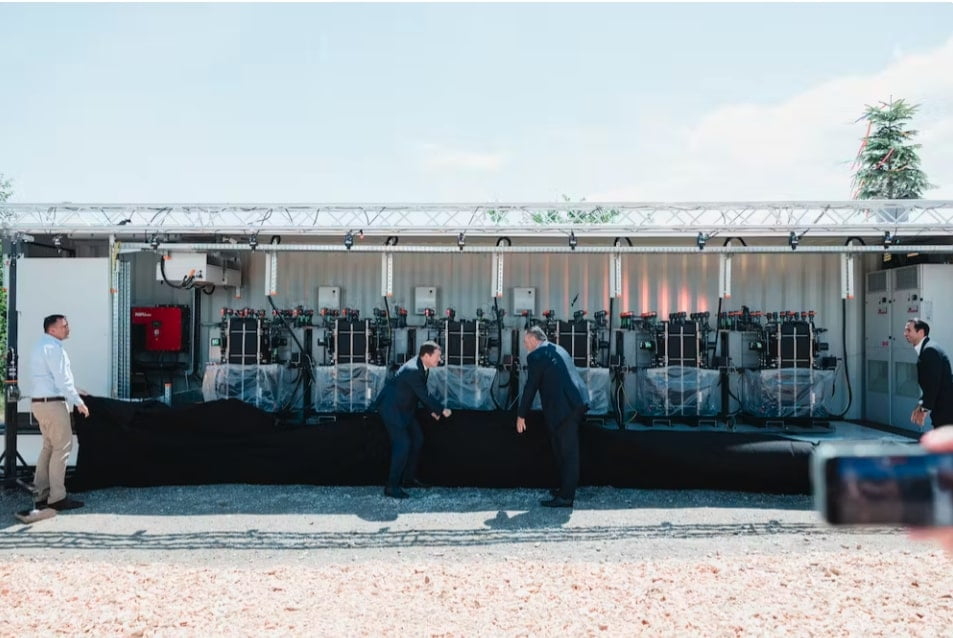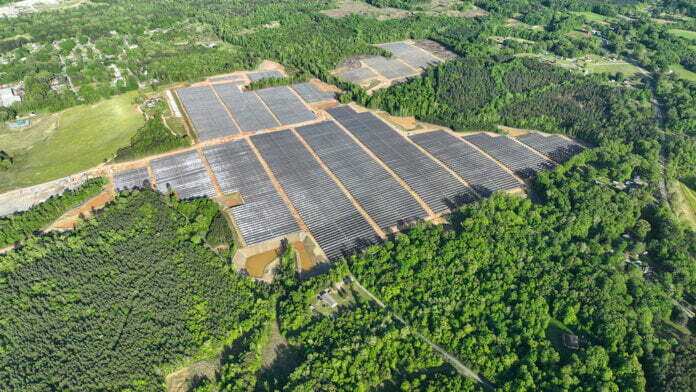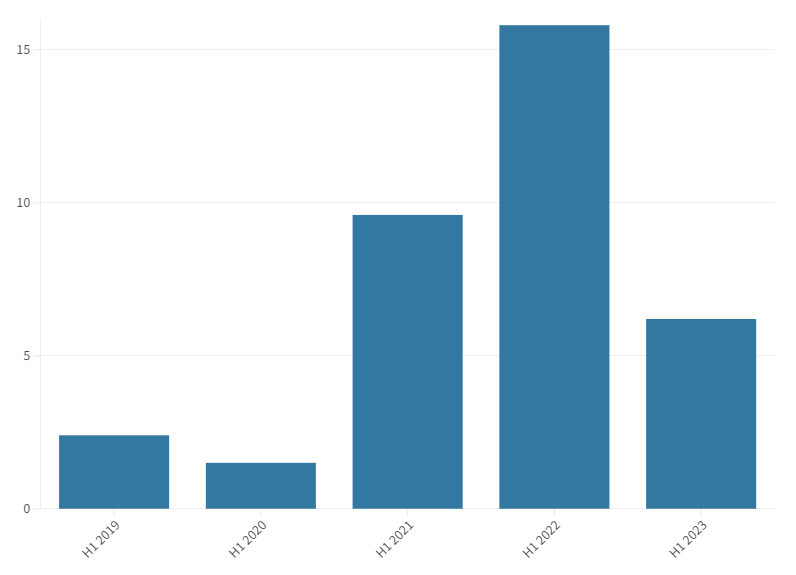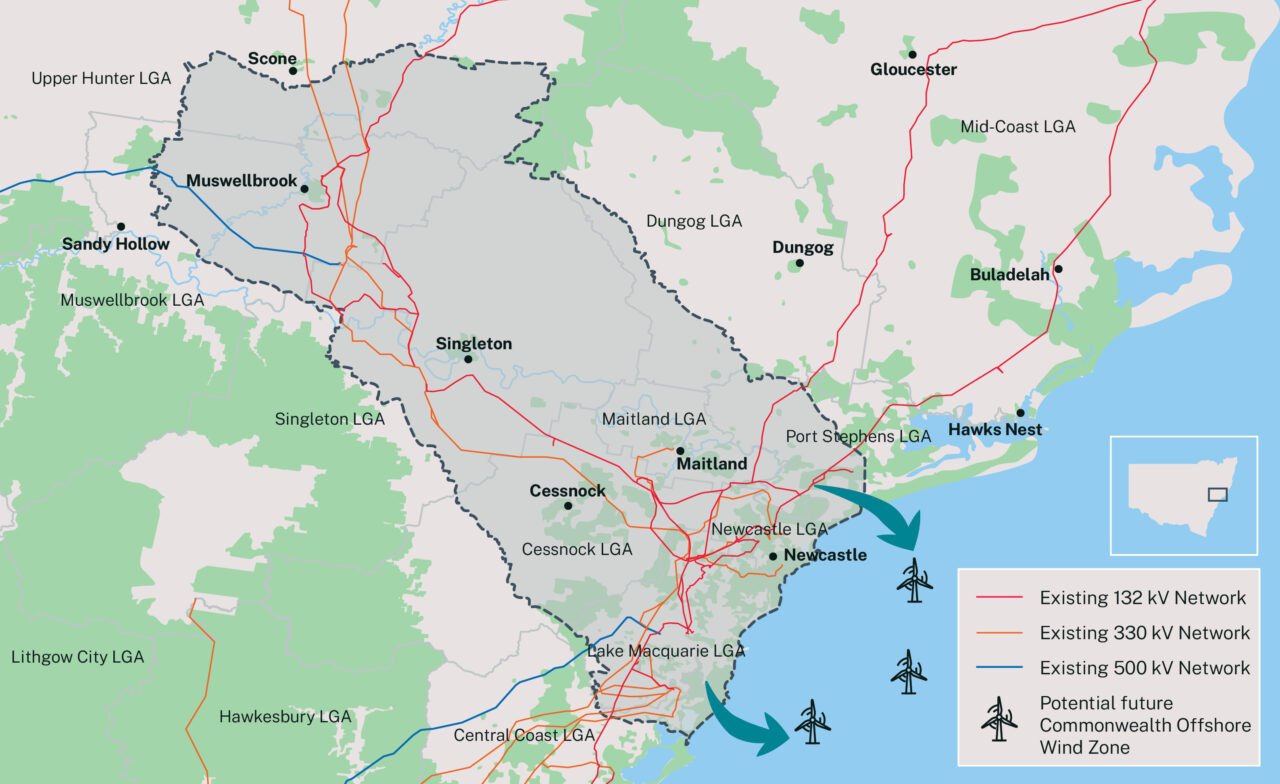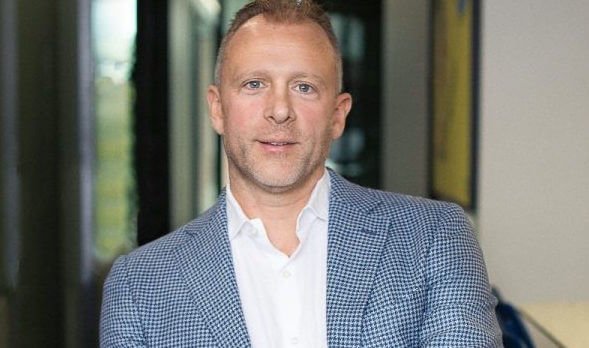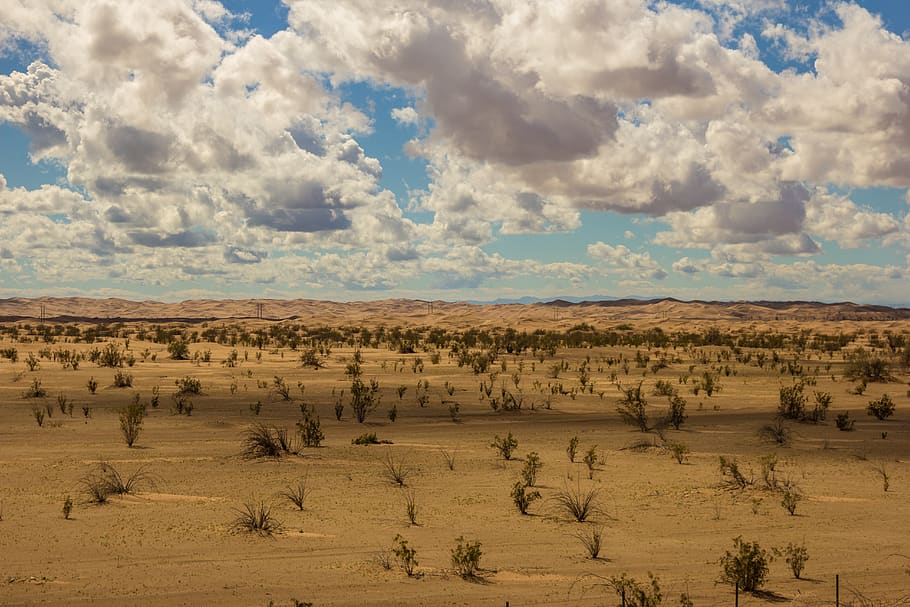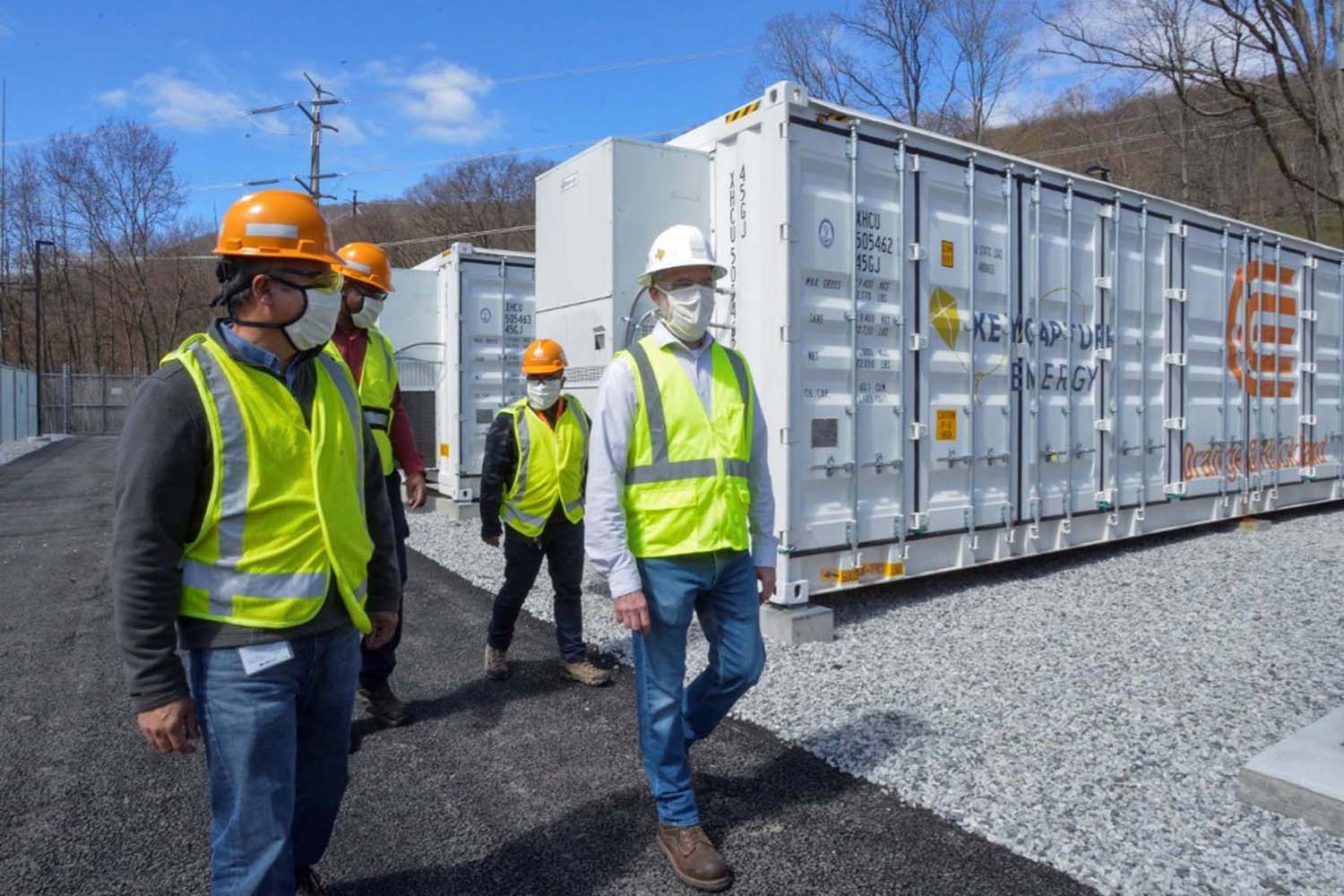The system will shift renewable production from peak generation times to peak consumtpion times, optimising the park’s output.
“Burgenland has set a clear goal: We want to and will be climate-neutral by 2030, energy-independent and therefore also price-independent”, said its Governor Hans Peter Doskozil at the presentation and press conference in Eisenstadt, Austria.
“One could have had it easy and relied on lithium-ion energy storage,” he continued. “But this would not have aligned with our morals that we want to gain the energy from natural and fair sources. Adopting storage solutions where we promote exploitation through mining on other continents is not an equitable energy transition. This is why we chose a research cooperation with CMBlu Energy to achieve and create a European model for 100% renewable energy.”
Dr. Peter Geigle, CEO of CMBlu, said: “With this successful delivery the foundation has been laid for testing our technology in a wide range of applications. Our focus for the coming weeks will be to evaluate our technology’s performance and then deliver further storage systems with a total capacity of 300 MWh to Burgenland.”
The battery uses proprietary organic flow technology, whereas most flow battery technologies use vanadium such as those from Invinity Energy Systems, although flow batteries with some other electrolye chemistries are on the market such as zinc bromine (Redflow) and iron (ESS Inc). CMBlu won its first US deal in February this year, securing an order for a system to be installed at a thermal plant in Wisconsin.
US utility Xcel Energy and liquid metal battery company Ambri have settled on a 300kWh system size for a previously-announced pilot project, they said today (19 July).
Nearly a year after the pair first announced plans to deploy Ambri’s technology at the Solar Technology Acceleration Center (SolarTAC) in Colorado, they have announced they will jointly test the 300kWh system for 12 months with installation set to begin in early 2024.
It should come online in late 2024 and will use the GridNXT Microgrid Platform at SolarTAC to integrate multiple generation sources, such as solar and wind, along with inverters, load banks, and 3-phase distribution connections and communications.
“Xcel Energy is a forward-thinking and ambitious utility, and their enthusiasm for testing our system highlights the huge potential for Liquid Metal batteries,” said Adam Briggs, Ambri CCO. “Xcel Energy clearly understands the significant value that can be achieved by integrating innovative storage technologies into their renewable portfolio.”
Xcel Energy is also deploying the first large-scale projects to use the iron-air battery technology from Form Energy, one of which recently got local approval to begin construction.
The SolarTAC project is the first field-deployed utility pilot system for Ambri. Throughout the demonstration, Xcel and Ambri will test various use cases, including solar and wind integration, capacity management, arbitrage, ancillary services and more.
NGK Insulators receives sodium-sulphur battery system order for Hitachi project in Maldives
Japan-based NGK Insulators has received an order from BASF Stationary Energy Storage for a demonstration project in the Republic of Maldives.
The project will use NGK’s proprietary sodium-sulfur (NAS) battery technology, for which BASF and NGK recently signed a sales and marketing agreement for global distribution in power-to-gas (P2G), power grid and microgrid applications.
The NAS battery will be a single-container, 250kW/1,450kWh system, and is expected to be energised in July 2024.
The demonstration project will be at a decarbonised seawater desalination system developed by Japanese industrial and engineering group Hitachi Zosen (not part of the larger Hitachi conglomerate).
The NAS batteries were selected by Hitachi Zosen under the “Financing Programme to Demonstrate Decarbonization Technology for Realizing Co-Innovation”, a publicly solicited project by the island country’s Ministry of Environment.
The project aims to build a decarbonised seawater desalination system that uses solar power and emits no greenhouse gases on the island of Gaafaru Atoll.
NGK’s technology was selected because of its environmental resistance and past operational achievements in off-grid and remote island microgrid projects globally. BASF recently wrote a sponsored article on Energy-Storage.news in which it said there are nearly 5GWh of NAS batteries deployed worldwide, across 250 projects.
The Maldives has amandated that 30% of the power source for seawater desalination plants, which are indispensable for securing fresh water on remote islands, be derived from renewable energy sources by 2030.
Continue reading

